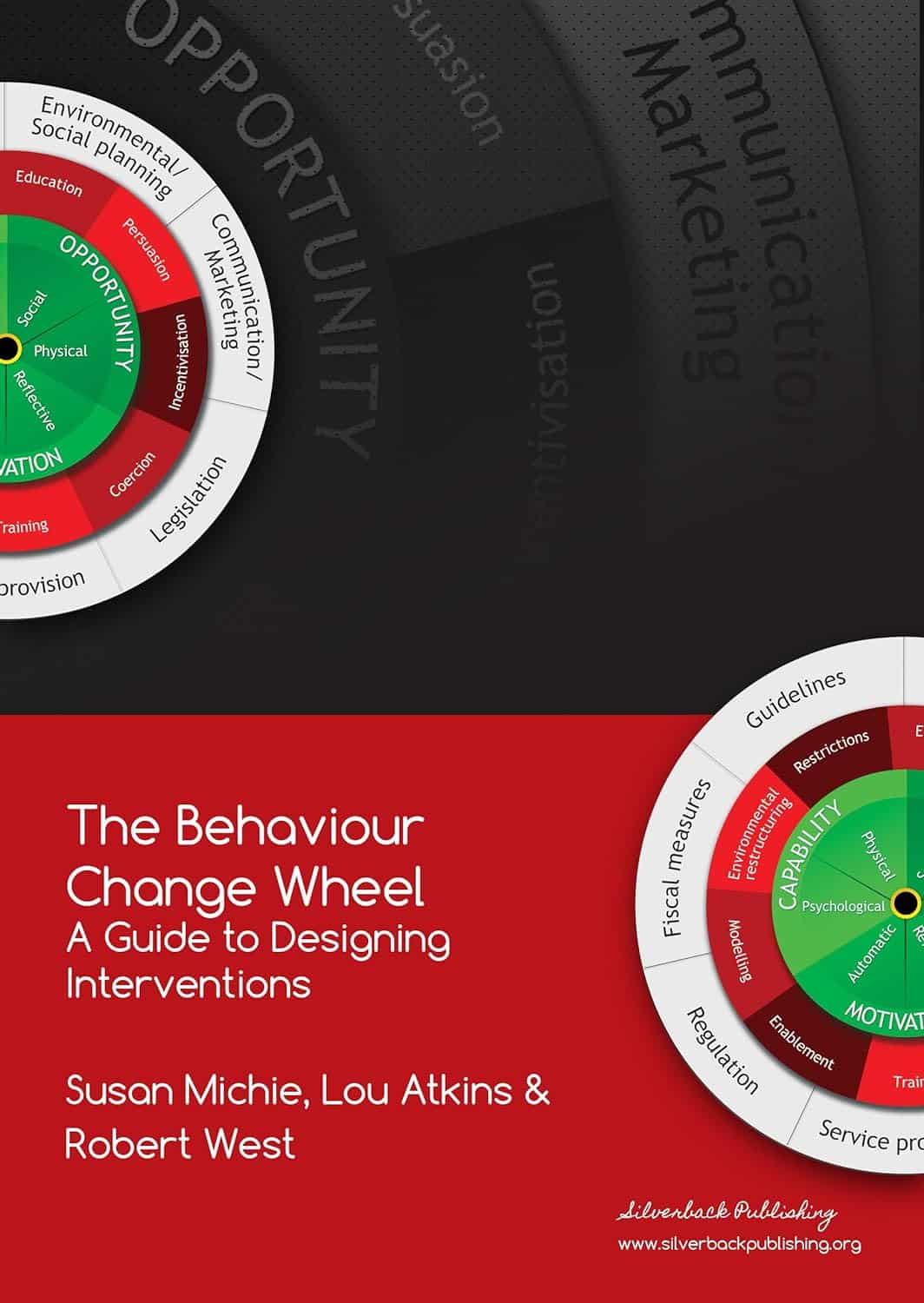The Behaviour Change Wheel
30.00 JOD
Please allow 2 – 5 weeks for delivery of this item
Description
This is a practical guide to designing and evaluating behaviour change interventions and policies. It is based on the Behaviour Change Wheel, a synthesis of 19 behaviour change frameworks that draw on a wide range of disciplines and approaches.
The guide is for policy makers, practitioners, intervention designers and researchers and introduces a systematic, theory-based method, key concepts and practical tasks.
Testimonials
“It is often said that behaviour change is easy. It isn. But help is at hand. This excellent book provides a step by step guide on how to do it.”
Professor Mike Kelly, Director of the Centre of Public Health, National Institute for Health and Care Excellence (NICE)
“By setting out a systematic method for understanding behaviour, and linking this understanding to techniques known to change behaviour in a clear and engaging format, this book gives practitioners and policy makers a scientific approach to designing interventions that are most likely to be effective.”
Professor Kevin Fenton, Director of Health and Wellbeing, Public Health England
“It is simply the best attempt I have seen to lay out a taxonomy of behaviour change, from characterising the behaviours to change, through the specific techniques to produce the change, to the contextualising factors.”
Professor Ron Borland, Nigel Gray Distinguished Fellow in Cancer Prevention at Cancer Council Victoria
“Michie, Atkins and West provide an excellent step-by-step guide based on their extensive experience and expertise, using their COM-B model.”
Marie Johnston, Emeritus Professor of Health Psychology, University of Aberdeen
Chapters
Introduction
Who the Guide is for
Why have we written this Guide?
More about the Behaviour Change Wheel (BCW)
Things to remember
Intervention design is about more than effectiveness
How to use the Guide
Questions addressed by the Guide
Chapter 1 Understand the behaviour
Step 1. Define the problem in behavioural terms
Step 2. Select the target behaviour
Step 3. Specify the target behaviour
Step 4: Identify what needs to change
Optional Step 4a: Identify what needs to change using the Theoretical Domains Framework (TDF)
Chapter 2 Identify intervention options
Step 5: Identify intervention functions
Step 6: Identify policy categories
Chapter 3 Identify content and implementation options
Step 7: Identify behaviour change techniques (BCTs)
Step 8: Identify mode of delivery
Chapter 4 A case study using the BCW to design an intervention to prevent melioidosis in Northeast Thailand
Aim
Methods
ResultsSummary
Chapter 5 A brief guide to using the BCW to evaluate behaviour change interventions and synthesise evidence
1. Identify intervention content
2. Investigate the functions played by BCTs
3. Specify theoretical underpinnings of interventions and understand processes of change
4. Assess fidelity of delivery
5. Evaluate other behaviour change frameworks
Appendix 1 Behaviour change frameworks contributing to the Behaviour Change Wheel
Appendix 2 Worksheets
Appendix 3 Spin the Wheel Quiz – answers
Appendix 4 Behaviour Change Technique Taxonomy (v1)
Appendix 5 Using the BCW, BCTTv1 and TDF to describe an intervention and support implementation: improving compliance with the Sepsis Six care pathway
Appendix 6 Sources referencing the Behaviour Change Wheel
Additional information
| Weight | 0.5 kg |
|---|---|
| Dimensions | 21 × 1.6 × 15.1 cm |
| by | |
| Format | Paperback |
| Language | |
| Publisher | |
| Publication City/Country | London, United Kingdom |
Only logged in customers who have purchased this product may leave a review.






Reviews
There are no reviews yet.